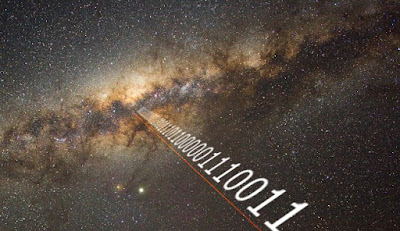A Search for Technosignatures Around 31 Sun-like Stars with the Green Bank Telescope at 1.15-1.73 GHz
Technosignatures are analogous to biosignatures in that they are a detectable sign of extant or extinct life Searches for technosignatures are logically continuous with the search for biosignatures as part of astrobiology. Technosignatures represent any sign of technology that we can use to infer the existence of intelligent life elsewhere in the universe. The search for technosignatures is thus broad, encompassing much of astronomy. Compared to biosignatures, technosignatures might therefore be more ubiquitous, more obvious, more unambiguous, and detectable at much greater (even extragalactic) distances.
We conducted a search for technosignatures in April of 2018 and 2019 with the L-band receiver (1.15-1.73 GHz) of the 100 m diameter Green Bank Telescope.
These observations focused on regions surrounding 31 Sun-like stars near the plane of the Galaxy. We present the results of our search for narrowband signals in this data set as well as improvements to our data processing pipeline.
Specifically, we applied an improved candidate signal detection procedure that relies on the topographic prominence of the signal power, which nearly doubles the signal detection count of some previously analyzed data sets.
We also improved the direction-of-origin filters that remove most radio frequency interference (RFI) to ensure that they uniquely link signals observed in separate scans.
We performed a preliminary signal injection and recovery analysis to test the performance of our pipeline. We found that our pipeline recovers 93% of the injected signals over the usable frequency range of the receiver and 98% if we exclude regions with dense RFI.
In this analysis, 99.73% of the recovered signals were correctly classified as technosignature candidates. Our improved data processing pipeline classified over 99.84% of the ~26 million signals detected in our data as RFI. Of the remaining candidates, 4539 were detected outside of known RFI frequency regions. The remaining candidates were visually inspected and verified to be of anthropogenic nature.
Our search compares favourably to other recent searches in terms of end-to-end sensitivity, frequency drift rate coverage, and signal detection count per unit bandwidth per unit integration time.
Source / Credits:
A Search for Technosignatures Around 31 Sun-like Stars with the Green Bank Telescope at 1.15-1.73 GHz
Jean-Luc Margot, Pavlo Pinchuk, Robert Geil, Stephen Alexander, Sparsh Arora, Swagata Biswas, Jose Cebreros, Sanjana Prabhu Desai, Benjamin Duclos, Riley Dunne, Kristy Kwan Lin, Shashwat Goel, Julia Gonzales, Alexander Gonzalez, Rishabh Jain, Adrian Lam, Briley Lewis, Rebecca Lewis, Grace Li, Mason MacDougall, Christopher Makarem, Ivan Manan, Eden Molina, Caroline Nagib, Kyle Neville, Connor O'Toole, Valerie Rockwell, Yoichiro Rokushima, Griffin Romanek, Carlyn Schmidgall, Samar Seth, Rehan Shah, Yuri Shimane, Myank Singhal, Armen Tokadjian, Lizvette Villafana, Zhixian Wang, In Yun, Lujia Zhu, Ryan S. Lynch




No comments:
Post a Comment